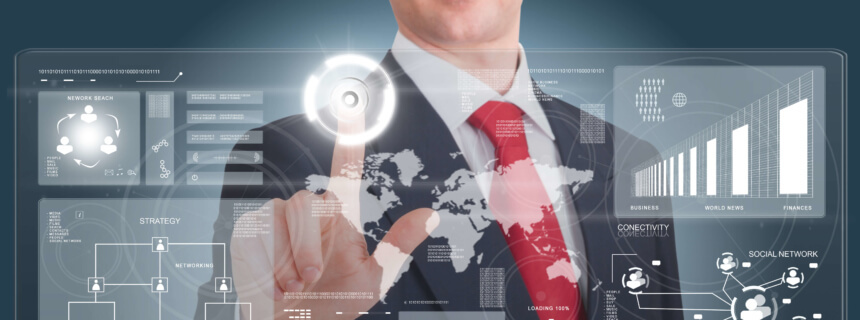Data Governance 2.0: The CIO’s Guide to Collaborative Data Governance

In the data-driven era, CIO’s need a solid understanding of data governance 2.0 …
Data governance (DG) is no longer about just compliance or relegated to the confines of IT. Today, data governance needs to be a ubiquitous part of your organization’s culture.
As the CIO, your stakeholders include both IT and business users in collaborative relationships, which means data governance is not only your business, it’s everyone’s business.
The ability to quickly collect vast amounts of data, analyze it and then use what you’ve learned to help foster better decision-making is the dream of business executives. But that vision is more difficult to execute than it might first appear.
While many organizations are aware of the need to implement a formal data governance initiative, many have faced obstacles getting started.
A lack of resources, difficulties in proving the business case, and challenges in getting senior management to see the importance of such an effort rank among the biggest obstacles facing DG initiatives, according to a recent survey by UBM.

Despite such hurdles, organizations are committed to trying to get data governance right. The same UBM study found that 98% of respondents considered data governance either important, or critically important to their organization.
And it’s unsurprising too. Considering that the unprecedented levels of digital transformation, with rapidly changing and evolving technology, mean data governance is not just an option, but rather a necessity.
Recognizing this, the IDC DX Awards recently resurfaced to give proper recognition and distinction to organizations who have successfully digitized their systems and business processes.
Creating a Culture of Data Governance
The right data of the right quality, regardless of where it is stored or what format it is stored in, must be available for use only by the right people for the right purpose. This is the promise of a formal data governance practice.
However, to create a culture of data governance requires buy-in from the top down, and the appropriate systems, tools and frameworks to ensure its continued success.
This take on data governance is often dubbed as Data Governance 2.0.
At erwin, we’ve identified what we believe to be the five pillars of data governance readiness:
- Initiative Sponsorship: Without executive sponsorship, you’ll have difficulty obtaining the funding, resources, support and alignment necessary for successful DG.
- Organizational Support: DG needs to be integrated into the data stewardship teams and wider culture. It also requires funding.
- Team Resources: Most successful organizations have established a formal data management group at the enterprise level. As a foundational component of enterprise data management, DG would reside in such a group.
- Enterprise Data Management Methodology: DG is foundational to enterprise data management. Without the other essential components (e.g., metadata management, enterprise data architecture, data quality management), DG will be a struggle.
- Delivery Capability: Successful and sustainable DG initiatives are supported by specialized tools, which are scoped as part of the DG initiative’s technical requirements.
Data Security
Data is becoming increasingly difficult to manage, control and secure as evidenced by the uptick in data breaches in almost every industry.
Therefore companies must work to secure intellectual property (IPs), client information and so much more.
So CIOs have to come up with appropriate plans to restrict certain people from accessing this information and allow only a small, relevant circle to view it when necessary.
However, this job isn’t as easy as you think it is. Organizations must walk the line between ease of access/data discoverability and security.
It’s the CIO’s responsibility to keep the balance, and data governance tools with role-based access can help maintain that balance.
Data Storage
The amount of data modern organizations have to manage means CIOs have to rethink data storage, as well as security.
This includes considerations as to what data should be stored and where, as well as understanding what data the organization – and the stakeholders within it – is responsible for.
This knowledge will enable better analysis, and the data used for such analysis more easily accessed when required and by approved parties. This is especially crucial for compliance with government regulations like the General Data Protection Regulation (GDPR), as well as other data regulations.
Defining the Right Audience
It’s a CIO’s responsibility to oversee the organization’s data governance systems. Of course, this means the implementation and upkeep of such systems, but it also includes creating the policies that will inform the data governance program itself.
Nowadays, lots of employees think they need access to all of an organization’s data to help them make better decisions for the company.
However, this can possibly expose company data to numerous threats and cyber attacks as well as intellectual property infringement.
So data governance that ensures only the right audience can access specific company information can come in handy, especially during a company’s brainstorming seasons, new products and services releases, and so much more.
Data governance is to be tailored by CIOs to meet their organizations’ specific needs (and wants). This is to ensure an efficient and effective way of utilizing data while also enabling employees to make better and wiser business decisions.
The Right Tools Help Solve the Enterprise Data Dilemma
What data do we have, where is it and what does it mean? This is the data dilemma that plagues most organizations.
The right tools can make or break your data governance initiatives. They encompass a number of different technologies, including data cataloging, data literacy, business process modeling, enterprise architecture and data modeling.
Each of these tools separately contribute to better data governance, however, increasingly, organizations are realizing the benefits of interconnectivity between them. This interconnectivity can be achieved through centralizing data-driven projects around metadata.
This means data professionals and their work benefits from a single source of truth, making analysis faster, more trustworthy and far easier to collaborate on.
With the erwin EDGE, an “enterprise data governance experience” is created to underpin Data Governance 2.0.
It unifies data and business architectures so all IT and business stakeholders can access relevant data in the context of their roles, supporting a culture committed to using data as a mission-critical asset and orchestrating the key mechanisms required to discover, fully understand, actively govern and effectively socialize and align data to the business.
You can learn more about data governance by reading our whitepaper: Examining the Data Trinity: Governance, Security and Privacy.
Examining the Data Trinity: Governance, Security and Privacy
A strong data governance foundation underpins data security and privacy.
Get the White Paper
